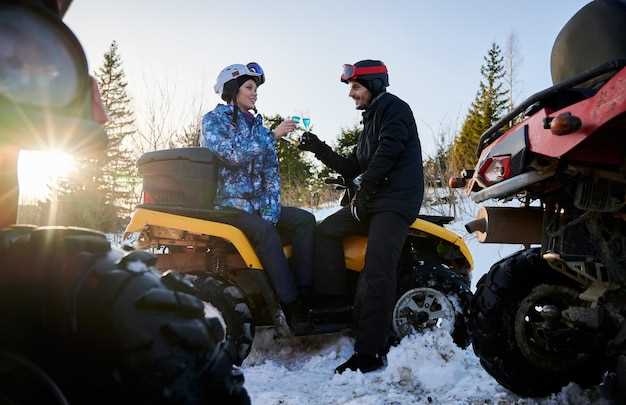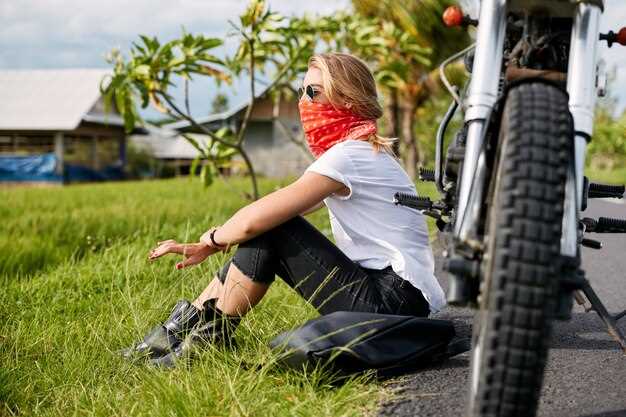
As the popularity of All-Terrain Vehicles (ATVs) continues to rise, ensuring the safety of young riders has become more critical than ever. Adolescents, often eager to explore off-road terrains, must be equipped with the right knowledge and skills to navigate these powerful machines responsibly. With the right lessons in place, parents and instructors can cultivate a culture of safe riding practices among teens, fostering not only excitement but also caution.
Responsible ATV riding involves more than just operating the vehicle; it requires a comprehensive understanding of safety protocols and the potential hazards that come with off-road adventures. By focusing on the core aspects of safety, such as proper gear, awareness of surroundings, and adherence to ride regulations, teens can develop a strong foundation to enhance their riding experience while minimizing risks. This article will outline effective strategies for teaching these essential skills, ensuring that the thrill of ATV riding is matched by a commitment to responsible practices.
Understanding the Importance of Safety Gear for Teen Riders

Ensuring safety while riding ATVs is paramount, especially for teen riders who are still developing their skills and judgment. An essential lesson for every young rider is the necessity of wearing appropriate safety gear. This gear acts as the first line of defense against potential accidents and injuries.
Helmets are the most critical piece of safety equipment. A well-fitted helmet can significantly reduce the risk of head injuries during a fall or collision. Teen riders should be educated on the importance of wearing helmets at all times, even on short trips. It’s crucial for them to understand that a moment’s distraction can lead to serious consequences.
In addition to helmets, other protective gear like gloves, knee pads, and elbow guards are vital for overall safety. Proper riding boots that provide ankle support can help prevent injuries. Teen riders need guidance on selecting durable gear designed specifically for ATV riding, rather than using casual or inappropriate apparel.
Lessons about safety gear should also emphasize the need for regular inspections and maintenance. Riders should be taught to check their gear for any signs of wear and tear before each ride. This practice ensures that the equipment remains effective and safe for use.
By instilling the habit of wearing safety gear, we can empower teen riders with the knowledge that they are taking precautions and making responsible choices. This awareness not only enhances their safety but also promotes a culture of responsibility among young ATV enthusiasts.
Steps to Educate Teens on Safe ATV Operation Practices
Teaching teens responsible ATV riding skills is crucial for their safety and the safety of others. Here are essential steps to ensure they receive proper lessons in safe operation.
1. Provide Comprehensive Safety Training
Begin with a thorough safety orientation that covers the mechanics of ATV operation, including understanding controls and handling. Emphasize the importance of wearing appropriate safety gear, such as helmets, gloves, and protective clothing, to minimize injury risks.
2. Conduct Hands-On Instruction
Organize practical lessons where teens can gain hands-on experience under the supervision of a knowledgeable instructor. This should include riding in a controlled environment to practice maneuvering, stopping, and turning. Encourage them to familiarize themselves with different terrains and obstacles.
3. Discuss the Importance of Safety Rules
Clearly outline the fundamental safety rules for ATV operation, such as not riding with passengers unless the ATV is designed for it, and refraining from reckless behavior such as speeding or performing stunts. Ensure that teens understand that these rules are in place for their protection and the protection of others.
4. Encourage Responsible Decision-Making
Teach teens to make informed decisions before riding. This includes checking weather conditions, understanding the terrain, and assessing their own skill levels. Discuss the importance of never riding under the influence of drugs or alcohol.
5. Promote Ongoing Learning
Reinforce that learning about ATV safety should be an ongoing process. Encourage teens to participate in advanced safety courses, stay updated on local laws, and regularly review safety practices. Instill a mindset of continuous improvement in their riding skills.
6. Lead by Example
As an adult or mentor, demonstrate safe riding practices yourself. Show commitment to safety standards and ethical riding behavior. Teens are more likely to adopt these practices if they see them modeled consistently.
By following these steps, you will equip teens with the necessary knowledge and skills to operate ATVs safely and responsibly, fostering a culture of safety that benefits everyone.
Creating a Responsible Riding Mindset in Young ATV Enthusiasts

Developing a responsible riding mindset in teenagers who are passionate about ATV riding is crucial for their safety and the well-being of others. Teaching effective lessons about responsibility can foster a culture of safety among young riders.
- Understanding Safety Protocols: It’s essential for teens to learn the importance of adhering to safety guidelines. This includes wearing proper protective gear, understanding ATV controls, and recognizing the limits of their riding skills.
- Respect for Nature: Instilling a respect for the environment helps young riders understand their responsibility to preserve the trails and landscapes they enjoy. Encouraging them to stick to designated paths is vital for conservation efforts.
- Risk Assessment: Teaching teens to assess risks involved in riding is fundamental. They should evaluate terrain challenges, weather conditions, and other potential hazards before embarking on their rides.
Incorporating these lessons into training programs can significantly impact young riders. Here are additional key aspects to consider:
- Peer Influence: Discuss the influence of peers on riding behavior. Encourage teens to choose friends who prioritize safety and responsibility, fostering a supportive riding community.
- Setting an Example: Adults should model responsible behavior when riding ATVs. Teenagers learn by observing, so demonstrating safe practices reinforces their importance.
- Engaging in Discussions: Regularly discuss riding experiences and challenges with teens. Encourage open dialogue about their thoughts on safety and any incidents they may encounter.
Fostering a responsible riding mindset in young ATV enthusiasts equips them with the knowledge and skills necessary for safe riding. By instilling these lessons, we can help shape a generation that values safety and respects the sport.
 Skip to the content
Skip to the content 